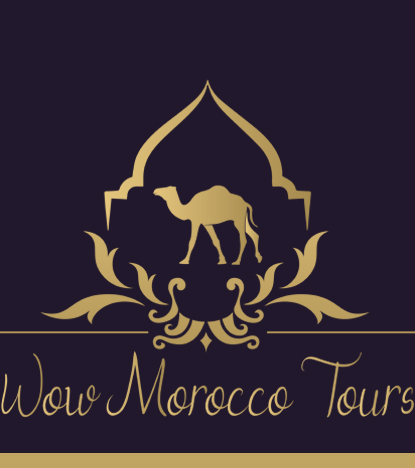
Exploring Morocco’s Atlas Mountains Hiking Trails and Mountain Villages
Introduction
Stretching across Morocco like a majestic spine, the Atlas Mountains are among North Africa’s most breathtaking natural wonders. From snow-capped peaks to terraced valleys and ancient stone villages, this vast mountain range offers a journey into the heart of Morocco’s wild beauty and vibrant culture. For hikers, trekkers, and adventurers, the Atlas Mountains are a dream destination offering trails for every skill level, panoramic vistas, and encounters with Amazigh (Berber) communities whose hospitality is as legendary as the landscapes they inhabit.
Whether you’re scaling the heights of Mount Toubkal North Africa’s tallest peak or wandering through the peaceful “Happy Valley” of Aït Bouguemez, hiking in the Atlas Mountains is about more than reaching a summit. It’s about slowing down, breathing in fresh mountain air, and connecting with a way of life that has changed little over the centuries.
The Atlas Mountains are divided into three main ranges: the High Atlas, Middle Atlas, and Anti-Atlas each with its own unique terrain, climate, and cultural gems. And with hiking routes ranging from half-day strolls to week-long treks, there’s something for every kind of explorer.
So, lace up your boots, charge your camera, and prepare to discover Morocco’s mountainous soul.
The Three Atlas Ranges: A Geographic Overview
The Atlas Mountains spans more than 2,500 kilometers across Morocco, separating the coastal plains from the Sahara Desert. This massive range is divided into three distinct sections each with its own character, scenery, and hiking opportunities. Understanding these regions helps travelers choose the right adventure for their interests and abilities.
1. High Atlas Mountains
Key Features:
- Home to the highest peaks in North Africa, including Mount Toubkal (4,167 m)
- Jagged ridges, deep gorges, and traditional Amazigh (Berber) villages
- Popular with serious trekkers and cultural explorers alike
Highlights:
- Toubkal National Park: Base for many multi-day treks and summit climbs
- Imlil: Gateway village just 90 minutes from Marrakech
- Aït Bouguemez (Happy Valley): Lush, green valley surrounded by red-rock cliffs
Best For:
Ambitious hikers, cultural immersion, and stunning high-altitude scenery
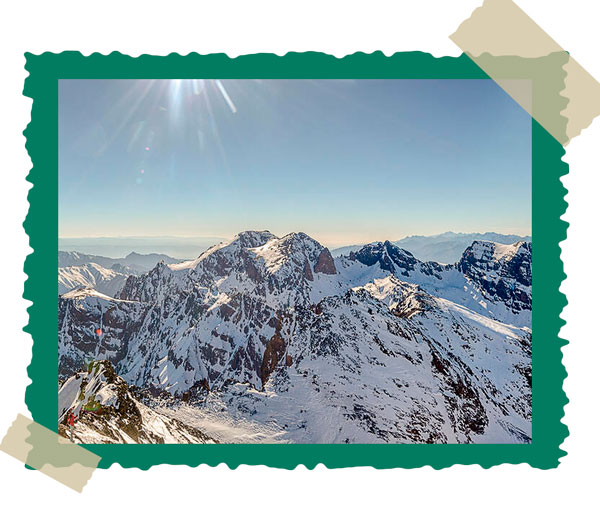
2. Middle Atlas Mountains
Key Features:
- Rolling hills, cedar forests, and hidden lakes
- Cooler and greener than the High Atlas, especially in spring and autumn
- Less crowded, ideal for relaxed hikes and wildlife spotting
Highlights:
- Azrou and Ifrane: Known for alpine-style architecture and nearby nature trails
- Cedar forests: Home to endangered Barbary macaques
- Imilchil: Remote lakes and the legendary “Berber Romeo and Juliet” tale
Best For:
Nature lovers, casual hikers, family trips, and off-the-beaten-path experiences
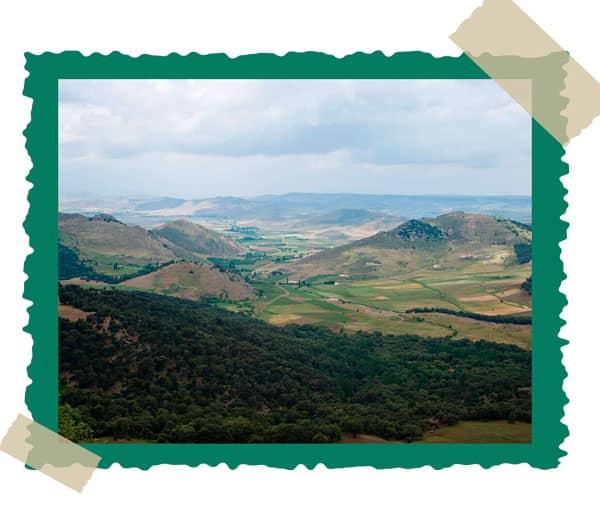
3. Anti-Atlas Mountains
Key Features:
- Rugged, arid, and dramatic landscapes
- Less vegetation but rich in geological formations and ancient culture
- Warmer and best explored in winter or early spring
Highlights:
- Tafraoute: Base for surreal rock formations and the famous Painted Rocks
- Ameln Valley: Scenic villages and palm-lined oases
- Jbel Sirwa: Extinct volcano between the High and Anti-Atlas ranges
Best For:
Adventure seekers, winter trekking, geology fans, and lovers of remote travel
Each range offers a unique window into Morocco’s geography and soul. Whether you’re craving alpine heights, peaceful forests, or desert-like ridges, the Atlas Mountains invite you to slow down and explore their many layers.
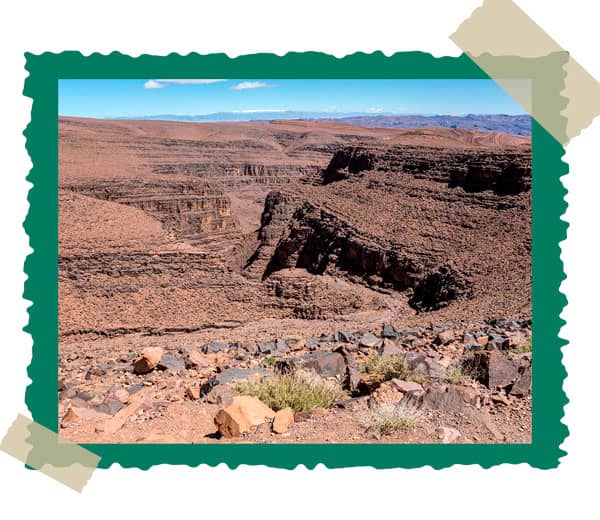
Ready to Explore the Atlas Mountains?
Discover scenic hiking trails, peaceful villages, and stunning mountain views. Whether you’re looking for adventure or a quiet escape, the Atlas Mountains have something special waiting for you.
Top Hiking Trails in the Atlas Mountains
Whether you’re a seasoned trekker or a casual hiker, the Atlas Mountains offer an incredible range of trails, from half-day scenic strolls to multi-day summit climbs. Here’s a guide to some of the most rewarding hikes across the three Atlas ranges, each showcasing a different face of Morocco’s natural beauty and cultural depth.
1. Mount Toubkal – The Roof of North Africa (High Atlas)
- Length: 2 to 3 days
- Elevation: 4,167 meters (13,671 ft)
- Difficulty: Challenging
- Starting Point: Imlil village (approx. 90 minutes from Marrakech)
Mount Toubkal is the highest peak in North Africa, drawing hikers from around the world. The classic trek begins in the picturesque village of Imlil and winds through steep valleys, rocky terrain, and remote shepherd shelters. Most hikers overnight at the Toubkal Refuge before summiting early the next morning to catch sunrise views that stretch to the Sahara.
What to Expect:
- Snow-capped peaks (especially from November to May)
- Dramatic mountain views
- Physical exertion with high-altitude exposure
- Berber hospitality and mule support along the way
Tip: Hire a local guide and bring layers even in summer, summit temperatures can be chilly.
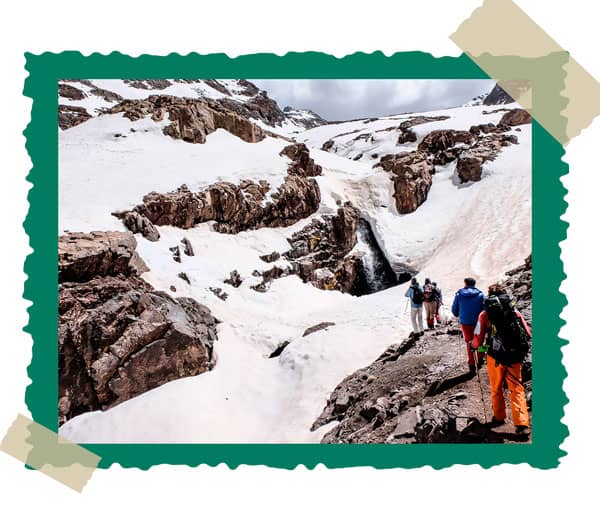
2. Imlil to Aroumd and Beyond – A Short Taste of Atlas Life (High Atlas)
- Length: 2–5 hours (day hike)
- Difficulty: Easy to moderate
- Starting Point: Imlil
This gentle hike is ideal for those with limited time who still want to experience Atlas beauty and Berber culture. The trail winds uphill through walnut groves and terraced fields to the tiny village of Aroumd, perched on a rocky outcrop with sweeping valley views.
What to Expect:
- Traditional homes built from stone and mud
- Kids playing football and women baking bread in clay ovens
- Mint tea with a mountain view at a guesthouse or café
Tip: Wear comfortable walking shoes and don’t rush the charm in the details and interactions.
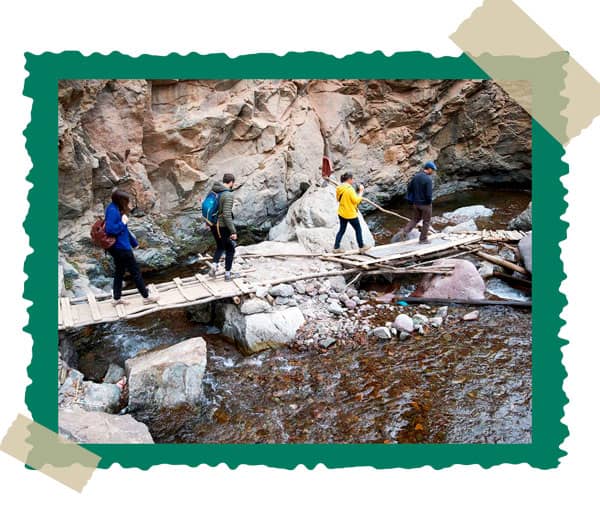
3. Aït Bouguemez – The Happy Valley (Central High Atlas)
- Length: 1–5 days, customizable routes
- Difficulty: Easy to moderate
- Starting Point: Tabant village
Known as “The Happy Valley” for its smiling locals and lush, fertile scenery, Aït Bouguemez is a dream for nature lovers and cultural travelers alike. Surrounded by red-rock cliffs and snow-dusted peaks, the valley is dotted with traditional villages, ancient granaries, and family-run guesthouses.
What to Expect:
- Wide trails perfect for hiking or mountain biking
- Encounters with Amazigh families and farmers
- Access to side hikes like the Sidi Moussa granary and Jbel M’Goun (optional summit for advanced trekkers)
Tip: Spend the night in a local guesthouse and enjoy homemade couscous after a long day’s walk.
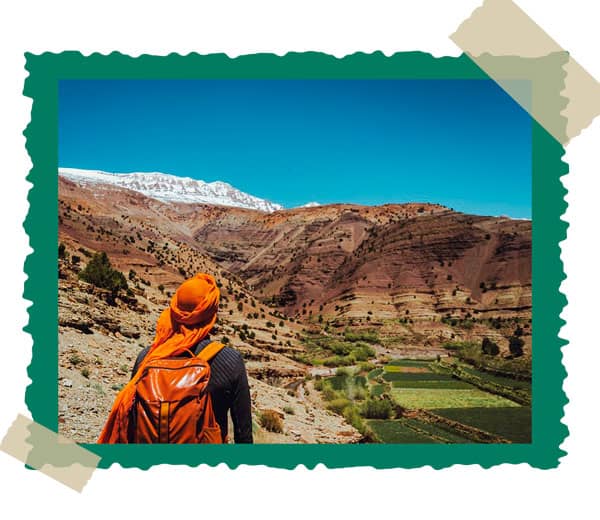
4. Imilchil and the Lakes of Legend (Middle Atlas)
- Length: Day hikes or multi-day explorations
- Difficulty: Moderate
- Starting Point: Imilchil village
Imilchil is a small, remote town surrounded by beautiful mountain landscapes and home to two high-altitude lakes: Lake Tislit and Lake Isli. According to local legend, these lakes were formed from the tears of star-crossed lovers, the Amazigh equivalent of Romeo and Juliet.
What to Expect:
- Alpine meadows and serene lake views
- Insight into semi-nomadic Berber culture
- Seasonal festivals like the Imilchil Marriage Festival
Tip: Best visited in late spring to early autumn when the roads are clear, and the landscape is green.
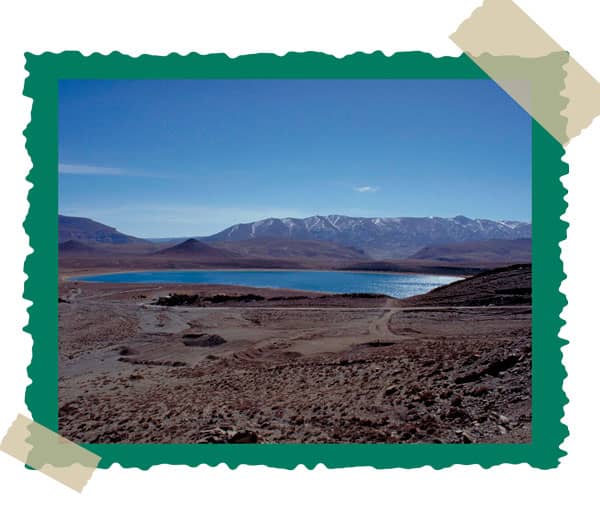
5. Tafraoute and the Painted Rocks (Anti-Atlas)
- Length: Half-day to multi-day circuits
- Difficulty: Easy to moderate
- Starting Point: Tafraoute town
Tucked into the pink granite valleys of the Anti-Atlas, Tafraoute is a hub for laid-back hiking through bizarre, beautiful landscapes. The most famous attraction is the Painted Rocks, a surreal art installation created by Belgian artist Jean Verame in the 1980’s massive boulders painted in blue, pink, and purple against the desert backdrop.
What to Expect:
- Rock arches, twisted cliffs, and ancient olive groves
- Trails passing through quiet villages like Oumesnat
- Warm, dry climate great for winter hiking
Tip: Rent a mountain bike if you want to cover more ground and combine hiking with cycling.
These trails offer more than just physical challenges; they provide deep cultural immersion, a glimpse into ancient ways of life, and a chance to slow down and appreciate Morocco’s raw, untamed beauty.
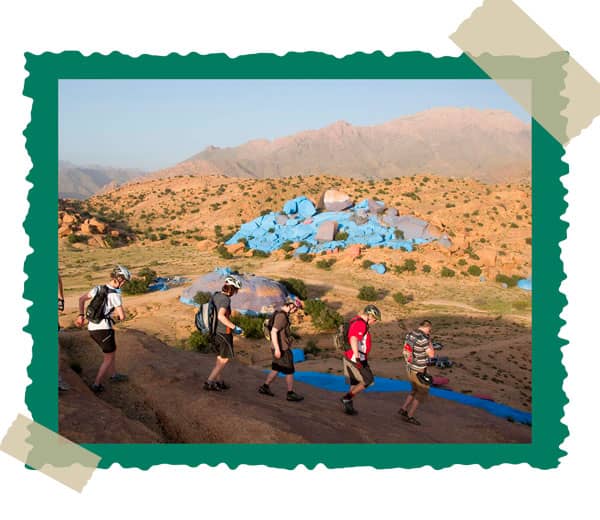
Ready to Explore the Atlas Mountains?
Discover scenic hiking trails, peaceful villages, and stunning mountain views. Whether you’re looking for adventure or a quiet escape, the Atlas Mountains have something special waiting for you.
Mountain Villages and Berber Culture
Hiking in the Atlas Mountains isn’t just about the landscapes, it’s about the people who live among them. Scattered across the valleys and hillsides are Amazigh (Berber) villages that have preserved their traditions, architecture, and rhythms of life for centuries. Visiting these villages offers travelers a rare opportunity to witness an authentic way of life, built on community, resilience, and harmony with nature.
Traditional Mountain Life
Life in the Atlas Mountains moves at a slower pace. Villages are typically made up of flat-roofed stone or mud-brick homes, often stacked into the hillsides. Narrow footpaths connect houses, and terraced fields grow wheat, barley, and vegetables with ancient irrigation methods.
Daily life includes:
- Farming and herding sheep or goats
- Baking bread in communal ovens
- Weaving rugs and textiles
- Gathering water from communal fountains
In many places, electricity and paved roads are still recent developments. Yet, this simplicity is part of the region’s charm.
Amazigh Identity and Hospitality
The Amazigh people often referred to as Berbers are the indigenous inhabitants of North Africa. In the Atlas Mountains, they’ve retained their distinct language (Tamazight), customs, and tribal identities.
One of the most memorable aspects of visiting these communities is their hospitality. It’s common to be invited in for mint tea, even if you’re a stranger passing by. Guests are treated with deep respect, and many families open their homes as gîtes (rural guesthouses) for hikers and travelers.
Staying in a Gîte or Family Home
Choosing to stay overnight in a mountain village is one of the most enriching experiences you can have. Most gîtes offer simple but comfortable accommodations: a bed or mattress on the floor, hearty home-cooked meals, and perhaps even a rooftop view of the stars.
Expect:
- Homemade tagines, harira soup, and freshly baked flatbread
- Shared meals with the host family
- Basic but clean amenities (sometimes shared bathrooms or limited hot water)
These stays not only support local families economically, but also create real cultural exchange.
Artisan Crafts and Local Markets
Many mountain villages are known for their handicrafts, passed down through generations. You might see:
- Handwoven carpets with bold geometric Amazigh designs
- Woolen blankets and shawls dyed with natural pigments
- Silver jewelry with intricate tribal motifs
- Pottery and carved wood in some areas
Local weekly markets called souks are held in various villages, where farmers and artisans come to trade goods, livestock, and supplies. These are excellent places to experience the buzz of rural life and pick up a unique souvenir directly from its maker.
Artisan Crafts and Local Markets
When visiting mountain villages, showing respect for local traditions is essential. Here are a few things to keep in mind:
- Dress modestly especially women, who should cover shoulders and knees
- Ask before taking photos, especially of people
- Learn a few words of Tamazight or Arabic even a simple greeting can go a long way
- Be mindful of gender roles and spaces some areas may be reserved for women only
Exploring Morocco’s mountain villages reveals a side of the country that many travelers miss, one rooted in simplicity, generosity, and an enduring connection to the land. Whether you’re sharing a meal, learning a few words in Tamazight, or watching farmers tend their fields, you’ll leave with more than memories. You’ll carry a piece of the Atlas spirit with you.
Practical Tips for Hiking in the Atlas Mountains
Hiking in Morocco’s Atlas Mountains is deeply rewarding but preparation is key to making your trek safe, enjoyable, and culturally respectful. Whether you’re heading out for a short-day hike or a multi-day journey, these essential tips will help you get the most from your mountain experience.
What to Pack
The weather in the Atlas Mountains can shift quickly, especially at higher altitudes. Be ready for sun, wind, and even snow often on the same day.
Essentials to bring:
- Sturdy hiking boots with good ankle support
- Layered clothing: moisture-wicking base layers, warm fleece, windbreaker, or waterproof jacket
- Hat, sunglasses, and sunscreen (the sun is strong at altitude)
- Reusable water bottle or hydration bladder
- Trail snacks or energy bars
- Headlamp or flashlight
- First aid kit and personal medications
- Trekking poles (optional, but helpful on steep or uneven terrain)
Hire a Local Guide or Mule
While some trails are well-marked, many are not. Hiring a local guide can enhance your experience significantly. They know the terrain, the weather patterns, and the cultural nuances plus, your money supports the local economy.
For longer treks, especially those involving overnight gear, you can also hire a mule and muleteer to carry your bags.
Benefits of a local guide:
- Navigation and safety
- Insights into local culture and history
- Translation with village residents
- Support in case of emergencies
Safety and Altitude Awareness
Altitude sickness is a real risk when trekking above 2,500 meters. Mount Toubkal, in particular, involves fast elevation gain.
To stay safe:
- Ascend gradually if possible
- Stay hydrated and well-fed
- Know the signs of altitude sickness: headache, nausea, dizziness, fatigue
- If symptoms worsen, descend immediately
General safety tips:
- Tell someone your route and expected return time
- Stay on marked trails when available
- Don’t hike alone in remote areas
- Be cautious around loose rocks and steep drop-offs
Trail Etiquette and Local Customs
Respect is essential for the environment and the communities you pass through.
Do:
- Greet people you meet on the trail (a simple “Salam alaykum” goes far)
- Stay on trails to avoid damaging crops or plants
- Ask permission before entering private land or taking photos
Don’t:
- Litter pack out all your trash
- Disturb livestock or farming activity
- Ignore cultural dress norms, especially in conservative areas
Leave No Trace
The Atlas Mountains are ecologically and culturally sensitive. Help protect them for future generations by following Leave No Trace principles:
- Take only photos, leave only footprints
- Avoid using single-use plastics
- Dispose of human waste responsibly
- Don’t take natural souvenirs like rocks or plants
Fitness and Preparation
While some hikes are easy and family-friendly, others like Mount Toubkal require a good level of fitness. If you’re planning a strenuous trek:
- Train with regular walking or hiking beforehand
- Try hill workouts or stair climbing to build endurance
- Stretch before and after hikes to avoid injury
A well-prepared hiker is a happy hiker. With the right gear, guidance, and respect for local traditions, your journey through the Atlas Mountains can be one of the most rewarding adventures of your life.
Ready to Explore the Atlas Mountains?
Discover scenic hiking trails, peaceful villages, and stunning mountain views. Whether you’re looking for adventure or a quiet escape, the Atlas Mountains have something special waiting for you.
When to Go and How to Get There
The Atlas Mountains are a year-round destination, but the best time to hike and how you get there can vary depending on the specific region and your travel style. Here’s a breakdown to help you plan your trip wisely.
Best Time to Visit
The ideal hiking season in the Atlas Mountains generally spans from spring to early autumn, but each range has its own climate and considerations.
Spring (March to May)
- Best for: Wildflowers, green valleys, flowing rivers
- Pros: Mild temperatures, blooming landscapes
- Cons: Melting snow can make high passes slippery
Summer (June to August)
- Best for: High-altitude hikes (e.g., Toubkal)
- Pros: Clear skies, long days
- Cons: Can be very hot at lower elevations and in the Anti-Atlas
Autumn (September to November)
- Best for: Post-summer treks with fewer crowds
- Pros: Stable weather, golden colors in valleys
- Cons: Days start getting shorter, chilly nights
Winter (December to February)
- Best for: Snowshoeing or winter mountaineering
- Pros: Fewer tourists, crisp mountain air
- Cons: Snow and cold temperatures limit access to high-altitude routes
Tip: Mount Toubkal can be climbed in winter, but only with proper gear and an experienced guide.
Getting There from Major Cities
Most Atlas hiking routes are surprisingly accessible from Morocco’s main cities, especially Marrakech.
From Marrakech (High Atlas Access)
- Imlil (Toubkal region): ~1.5 to 2 hours by taxi or private car
- Aït Bouguemez Valley: ~4 to 5 hours via Azilal
- Oukaïmeden (ski resort and summer hiking): ~1.5 hours
From Fes (Middle Atlas Access)
- Ifrane and Azrou: ~1 to 2 hours by taxi or shared grand taxi
- Imilchil: ~5 to 6 hours best reached via Midelt
From Agadir or Taroudant (Anti-Atlas Access)
- Tafraoute: ~4 to 5 hours by car
- Ameln Valley: Right next to Tafraoute
By Public Transport
- Shared grand taxis are the most common transport into the mountains
- Buses serve larger towns (Azilal, Midelt, Taroudant)
- Private transfers or rental cars are recommended for remote villages or flexible travel
Note: Road conditions vary while many are paved, mountain roads can be narrow, winding, or affected by weather. If driving yourself, go slowly and be cautious.
With thoughtful timing and a clear plan for getting around, your Atlas Mountains trip can start smoothly and leave you more time to focus on the stunning scenery and soulful experiences ahead.
Conclusion
The Atlas Mountains are more than just a destination; they are a journey into the heart of Morocco’s natural splendor and cultural soul. From snow-dusted peaks to sun-baked valleys, from spirited Amazigh villages to serene alpine trails, the Atlas ranges offer something for every kind of traveler.
Whether you’re trekking to the summit of Mount Toubkal, wandering through cedar forests in the Middle Atlas, or sipping mint tea in a stone-built village, each step reveals a different layer of Morocco’s rugged beauty and deep-rooted traditions.
Take your time, walk mindfully, and let the mountains shape your experience. The memories you make in the Atlas will stay with you long after the trail ends.
